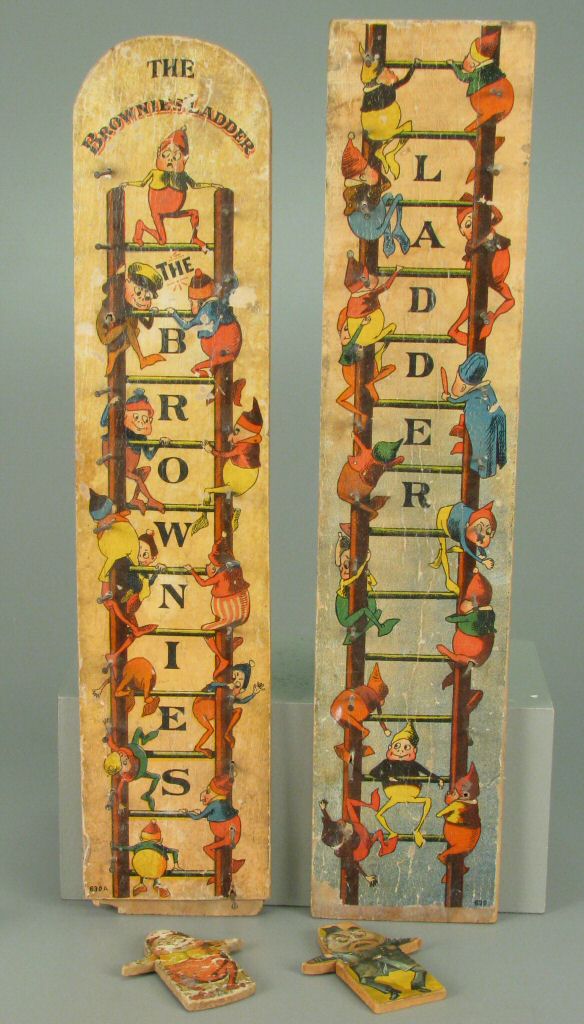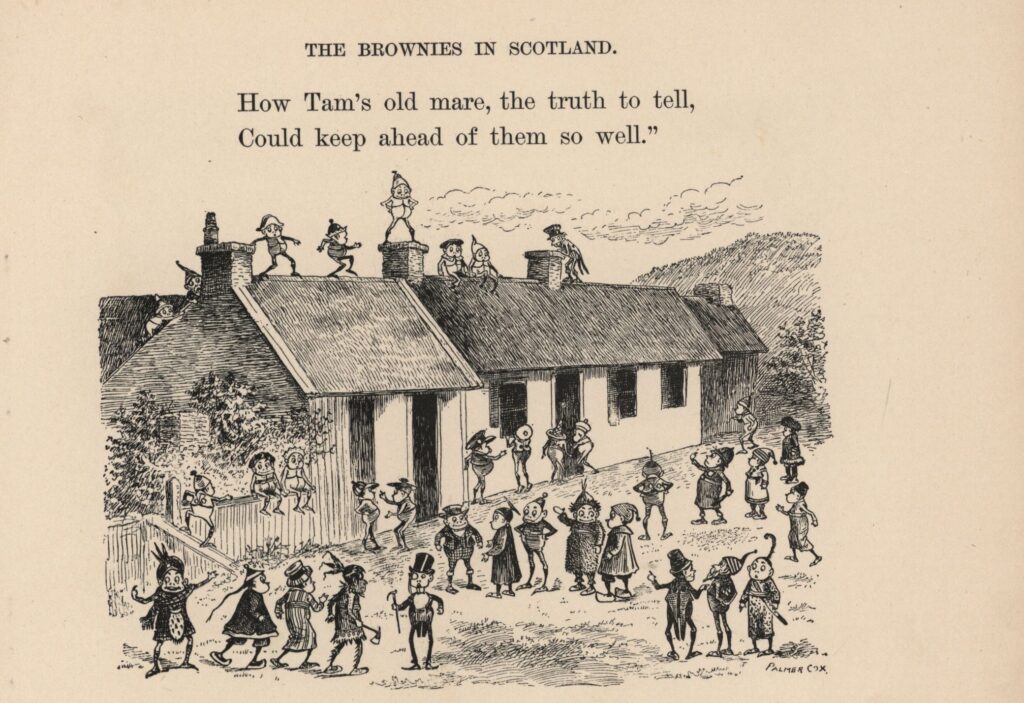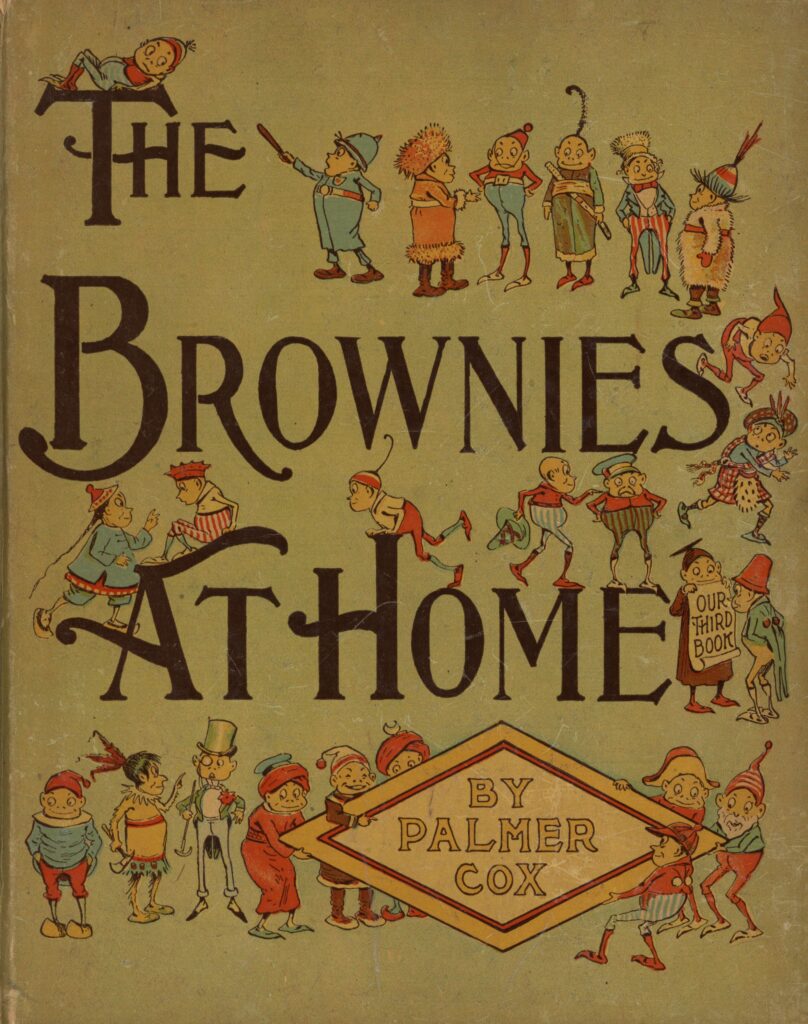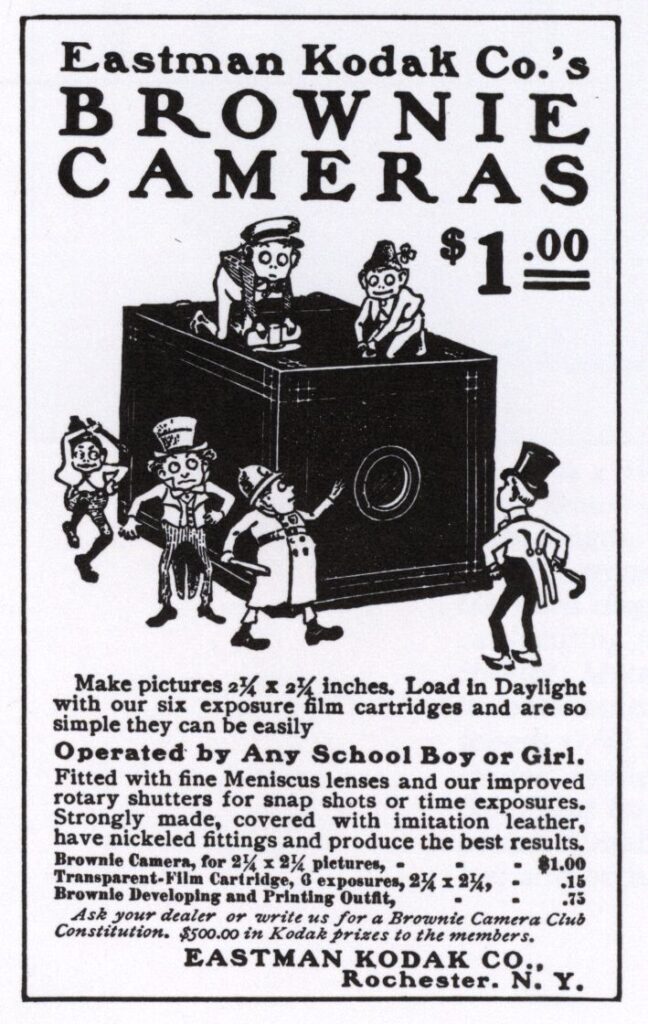While cataloging some older books found within the museum’s collection, I kept coming across ones that had “Brownie” in the title. These books were written and illustrated by Palmer Cox, and the artwork within had whimsical characters (almost resembling Elf on the Shelf) travelling and causing mischief. Curious about who these characters were and the story behind them, I started doing some research and uncovered some surprising connections between them and some Rochester New York history!

As someone who indulges in a lot of fantasy-related media and folklore podcasts, the term brownie rang a bell to me as a type of faerie, originating in Scotland with the bwbachod or bwca as their Welsh equivalent. When you think of faeries you probably picture characters like Tinker Bell from Disney’s Peter Pan, small creatures with wings who cause mischief or are helpful. This is a very modern-day depiction of fae creatures! Fae as it turns out in folklore come in l different shapes and sizes, categorizations, and alignments towards intending harm or aid for humans. Brownies were solitary fae that would work in people’s homes secretly. They are described as “small men, about three feet in height, very raggedly dressed in brown clothes, with …. shaggy heads, who come out at night and do the work that has been left undone by the servants,” according to Katherine Briggs’ A Dictionary of Fairies. They would perform housework and were believed to ensure prosperity in the home. However, they did not do this for free, and it was recommended the human residents leave offerings of cream or porridge by the hearth. But if homeowners offered them clothing, the brownie would leave the house and move on to another one. (Talk about touchy!) Thomas Knightley in The World Guide to Gnomes, Fairies, Elves and Other Little People also mentions that these small men reside in “the hollow of an old tree, a ruined castle, or the abode of man. He is attached to particular families, with whom he has been known to reside, even for centuries.”

What is interesting to learn is that creatures such as these appear in folklore all around the world, not just Great Britain where most of our stories of them originate. Knightley mentions brownies being the same as kobolds and goblins in other European folk tales and in Nordic folklore there are the Nisse (or Nis) which, according to Vaesen: Nordic Horror Roleplaying, are “little old men with long beards, shabby gray clothes, and red hats. They are grumpy, vindictive, and proud.” The legends around these creatures, no matter their names, all reflect small fae-like people who helped around the house or farm, but if they encountered lazy farmhands or housekeepers, the brownies would scold them, pinch them while they slept, or cause mischief for the humans.

Turning then to Palmer Cox, the Canadian illustrator began depicting his whimsical characters in St. Nicholas Magazine in 1883 and eventually the poems and illustrations from the magazine were published in his book The Brownies: Their Book in 1887. This would be only the first of a lengthy list of titles from Cox with the Brownies as the main characters. While there are many differences between Cox’s Brownies and the folklore he drew upon from Scotland, Eileen Margerum in Interdisciplinary and Cross-Cultural Narratives in North America (Studies on Themes and Motifs in Literature) from 2005, sums it up best by saying that Cox’s stories were “not about ‘the brownie’ by rather about ‘Brownies.’ No longer potentially malevolent, and no longer solitary, the Brownies have become the quintessential American belongers. There is never dissent; they always act as one.” Cox would show them going on adventures in the United States in The Brownies at Home from 1891, or on a global trip in The Brownies Around the World from 1892, one stop being Scotland funnily enough. Cox would begin each story with this quote: “Brownies, like fairies and goblins, are imaginary little sprites, who are supposed to delight in harmless pranks and helpful deeds. They work and sport while weary households sleep, and never allow themselves to be seen by mortal eyes.”
These little characters were such a hit in his illustrations that they started “Brownie-mania” in the 1890s that swept across the nation and resulted in Cox’s characters being adapted into various toys, games, plays, and household products. Many of these renditions of the Brownies were authorized, but many were not. However, this was not illegal due to Cox being unable to copyright the folklore creatures’ name. And in 1900, George Eastman in Rochester, New York, would appropriate the name for Kodak’s new product, invented by Frank A. Brownell: the “Brownie” camera.

When the Brownie Camera was advertised, Eastman wanted it to show that photography was something so simple that even children could take pictures, and Kodak wanted to aim their ads towards this demographic. As such, many of the advertisements for Brownie cameras featured little elf-like characters on and around the cameras or on the packaging. However, there is no official source indicating that Eastman was drawing on Palmer Cox’s little fae characters for the product’s name. Cox never seems to have been asked about authorizing Kodak to use his style of brownies in their advertising and naming of the camera, but the resemblance is uncanny and certainly makes one see a direct connection between Cox’s Brownie-mania and Kodak’s famous camera!
Researching these characters that were popularized by Cox’s illustrations, where they originated in folklore, and tracing them to the Brownie-mania of the 1890s that eventually led to George Eastman was a fascinating dig into history that even extends further into Girl Scout ranks and more as it turns out! It is always a joy to find the unknown connections between points of history we may not have realized were connected to begin with.


